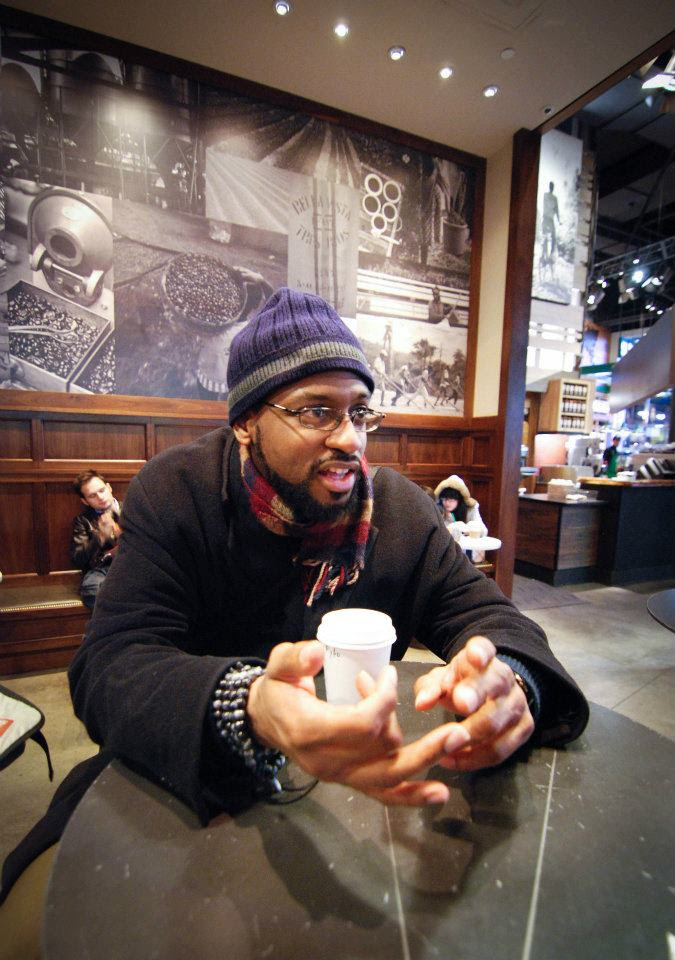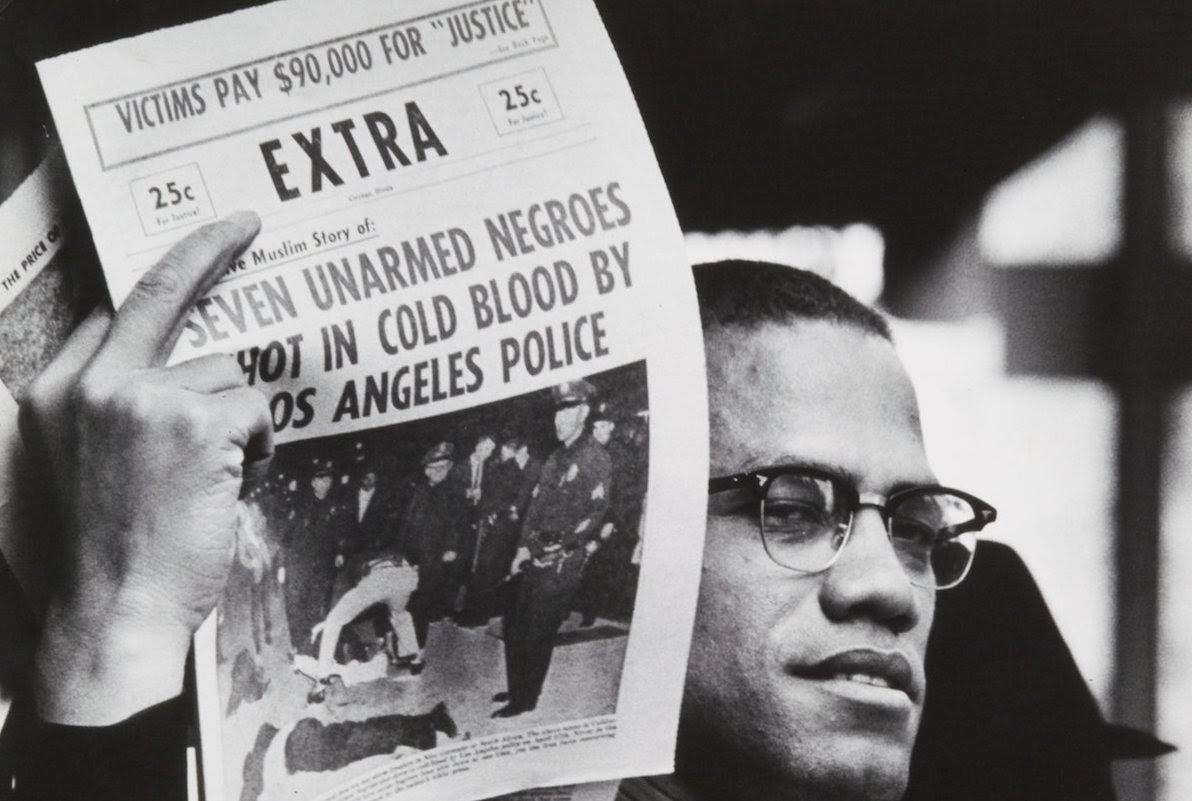By AHMAD ZAKX UTHMAN
On 14/09/2017
time:11:47pm
On April 14th, 1972, a man claiming to be a Detective Thomas from New York City’s 28th
police precinct placed a call requesting assistance for a fellow
officer in distress. The call, later determined to be a fake, prompted
two officers to rush to the address, which was the Nation of Islam’s
Harlem Mosque # 7. The two officers “smashed their way into the 116th St. Mosque.”[1] This violated of the NYPD’s policy with regard to the Muslim place of worship.[2]
Members of the mosque felt compelled to protect the sanctity of the
space and the safety of the congregation. A fight broke out. It is
unclear exactly what happened, but in the ensuing melee, Phillip
Cardillo, one of the two officers who had burst into the mosque
unannounced, was killed.
More
officers rushed to the mosque, creating a scene that the Amsterdam News
described as an “attack” and “invasion”. Harlem residents, who saw the
mosque as an essential asset to the community, formed a crowd of
concerned onlookers. Minister Louis Farrakhan, the spiritual leader for
Mosque # 7 at the time, arrived along with Harlem Congressman Charlie
Rangel. Members of the Mosque of Islamic Brotherhood, Harlem’s principal
Sunni Muslim institution, rushed over to help ensure the safety of the
roughly three to five hundred members of Mosque # 7 who were trapped
inside the building. Minister Farrakhan urged the crowd, which had now
grown angry, to keep calm. He and Congressman Rangel worked out a deal
with NYPD’s Chief of Detectives Albert Seedman to diffuse the situation.
One Mosque # 7 member was eventually apprehended and tried, but
ultimately acquitted.[3]
What
was so extraordinary about this 1972 incident was the Muslims’ ability
to leverage their influence to address the situation. Charges were not
brought against anyone from the mosque until two years later,
and the subsequent trial resulted in an acquittal. Further, the Muslims
demanded both “an apology from the city and an all-Black police force
for Harlem.”[4]
The Muslims of Mosque #7 also held a unity rally protesting the police
department’s actions. Sunni Muslims were in attendance, including the
world-renowned Egyptian scholar and Qu’ran reciter Sheikh Mahmoud Khalil
al-Hussary.[5] Muslims of differing theological opinions came together to oppose repressive policing of Muslims and people of color.
This was not the first time Muslims had fought for police accountability in New York City. If you’ve seen the Spike Lee film Malcolm X (or if you’ve read the explanation of Kanye West’s song Power on rapgenius.com),
then you probably know about Johnson Hinton, a member of the Nation who
was savagely brutalized and arrested after he and two other Muslims
confronted two white police officers for beating a Black man in Harlem
in 1957. Members of the Fruit of Islam, the Nation’s paramilitary-style
self-defense wing, marched orderly to the local police precinct, flanked
by a crowd of roughly five hundred angry Harlemites. In response to
Malcolm X’s leadership in coordinating the Muslims’ efforts on the night
of the beating, one NYPD officer famously exclaimed, “No one man should
have that much power.”[6]
Hinton received medical attention and the largest settlement for a
police brutality case in New York City’s history at that time. Both the
Nation of Islam’s run-in with the police and its ability to apply the
necessary pressure to obtain greater justice for its member were
indicative of the relationship it would develop with the NYPD over the
next decade and a half.
The
Nation’s 1972 call for local control of the police was not atypical.
Black Sunni Muslims in urban American cities pursued similar strategies.
While they may not have mounted campaigns for all-Black police forces,
many initiated efforts to maintain law and order in their own
neighborhoods. One example is the aforementioned Mosque of Islamic
Brotherhood (MIB). The lineal descendent of Malcolm X’s Muslim Mosque
Inc., MIB took Malcolm’s calls for local control to heart. In the late
1960’s, MIB adopted the heroin-infested block of 113th St.
and St. Nicholas Ave. in Harlem, pushing out criminals and drug dealers
and creating the backbone of what quickly became a peaceful, thriving,
and now rapidly gentrifying neighborhood. A later example is Masjid
Taqwa in Bedford-Stuyvesant, Brooklyn. Members of the community
purportedly patrolled their rooftop with scoped rifles in order to
police the neighborhood when the mosque was first built in 1980. As a
result, a roughly two block radius surrounding the mosque is now home to
grocery stores, restaurants, barbershops, and other businesses that
cater to a vibrant community of Muslims, and passersby need not worry
about crime or harassment.
During the 1960’s and 1970’s, Brooklyn’s Yasin Mosque also created a safe zone through the efforts of Ra’d,
its own paramilitary wing, which oversaw the well-being of mosque
members and the surrounding community. As with Mosque # 7, this
sometimes required skirmishes with hostile police officers who came from
outside the community.[7]
Yasin Mosque served as the nucleus for the nation’s largest network of
African American Sunni mosques, the Darul Islam movement – or the Dar
for short. Imam Jamil Al-Amin – formerly known as H. Rap Brown, a
prominent leader in the Student Nonviolent Coordinating Committee (SNCC)
and the Black Panther Party – exported the Dar’s local control model to
Atlanta. There, he and his followers cleaned up the notoriously
crime-ridden West End neighborhood, creating yet another safe zone
policed by Black American Muslims.
What
emerges from this history is a rich tradition of local control and
community policing among Muslim African Americans. While such strategies
varied by context and location, they generally followed a three-part
model. First, community members policed their own neighborhoods,
organically creating safe spaces where businesses, schools, and
community life flourished. Second, these groups created strong
relationships with community-minded elected officials, and Muslims and
people of color in law enforcement, to maintain these spaces.[8]
Third, they leveraged their relationships with members of the broader
community – who were grateful for the Muslims’ contributions to the
community – to engage in protests to ensure police accountability when
necessary.
As the list of Black men and
women killed with impunity by police grows, this history of Black
Muslims’ strategies to foster community control and fight police
brutality is becoming increasingly relevant. The Islamic Society of
North America (ISNA) issued a statement in the wake of the Baltimore
uprising earlier this year. In its response, ISNA demonstrated just how
out of touch the organization was with the community it seeks to
represent.[9]
While our knowledge of the illegal surveillance and harassment of
Muslim communities grows, the links between these current injustices and
the infamous COINTELPRO policies that targeted scores of Black
communities (Muslim and non-Muslim alike) are unknown to many Muslim
Americans. Rediscovering this history carries a serious urgency. As
Islamophobia becomes increasingly widespread, Muslims stand to lose much
of the support and cultural capital they have gained over the course of
the last 50+ years, which came as a result of their efforts to make
life better for working-class communities and people of color. More
importantly, the freedom, security, and lives of millions of American
women and men victimized due to their race and religion is at stake.
Muslims in America are in dire need of the insights provided by the
Black Muslim experience, just as communities of color are in dire need
of the local control strategies that Black Muslims once pioneered.
[1] “Cops Invade Mosque: Editorial Invasion of Mosque No. 7.” New York Amsterdam News (1962-1993); Apr 22, 1972. p. A1.
[2]
Since Mosque # 7 was deemed a “sensitive location”, police established a
protocol stipulating they provide advanced notice if they needed to
search the mosque. In the past, the NYPD was duly granted permission and
entered the premises in a respectful manner.
[3] Ibid.
[4] Russell, Carlos. “A funny thing happened.” New York Amsterdam News (1962-1993); May 6, 1972. p. A5.
[5] Craft, Mona. “Muslims seek unity.” New York Amsterdam News (1962-1993); May 13, 1972. p. B12
[6] Marable, Manning. Malcolm X: A Life of Reinvention. Reprint edition. New York: Penguin Books, 2011. p. 128
[7] Curtis, R.M. Mukhtar. “The Formation of the Darul Islam Movement.” In Muslim Communities in North America, by Yvonne Yazbeck Haddad and Jane I. Smith. SUNY Press, 1994. 59
[8]
Even the Nation of Islam’s supreme leader, the Honorable Elijah
Muhammad, received an award from the National Society of Afro-American
Policemen in 1969 at a New York City luncheon. Minister Louis Farrakhan
accepted the citation on his behalf. “Farakhan to Accept Citation.” New
York Amsterdam News (1962-1993); June 14, 1969. p. 3.
[9]
For the statement and some of the critiques against it, see:
Contributor, Guest. “MuslimARC – Open Letter to American Muslim
Organizations on Police Brutality, Baltimore and Freddie Gray.” Altmuslim. Accessed May 16, 2015. http://www.patheos.com/blogs/

Rasul Miller
is a PhD student in History and Africana Studies at the University of
Pennsylvania. His research interests include Muslim movements in 20th
century America and their relationship to Black internationalist thought
and West African intellectual history.
|
Thursday, 14 September 2017
Subscribe to:
Comments (Atom)
Blacks Islamic History: Blacks Islamic History: MUSLIMS AND JAZZ IN 1953
Blacks Islamic History: Blacks Islamic History: MUSLIMS AND JAZZ IN 1953 : Blacks Islamic History: MUSLIMS AND JAZZ IN 1953 : ...
-
Conversation A Trajectory of Manumission: Examining the Issue of Slavery in Islam ...
-
The African Qurʾā n: Ramadan Remedies fo r Racial and Religious Int olerance on July,16, 2017 Qurʾān , Sura Yusuf, 12:3...
